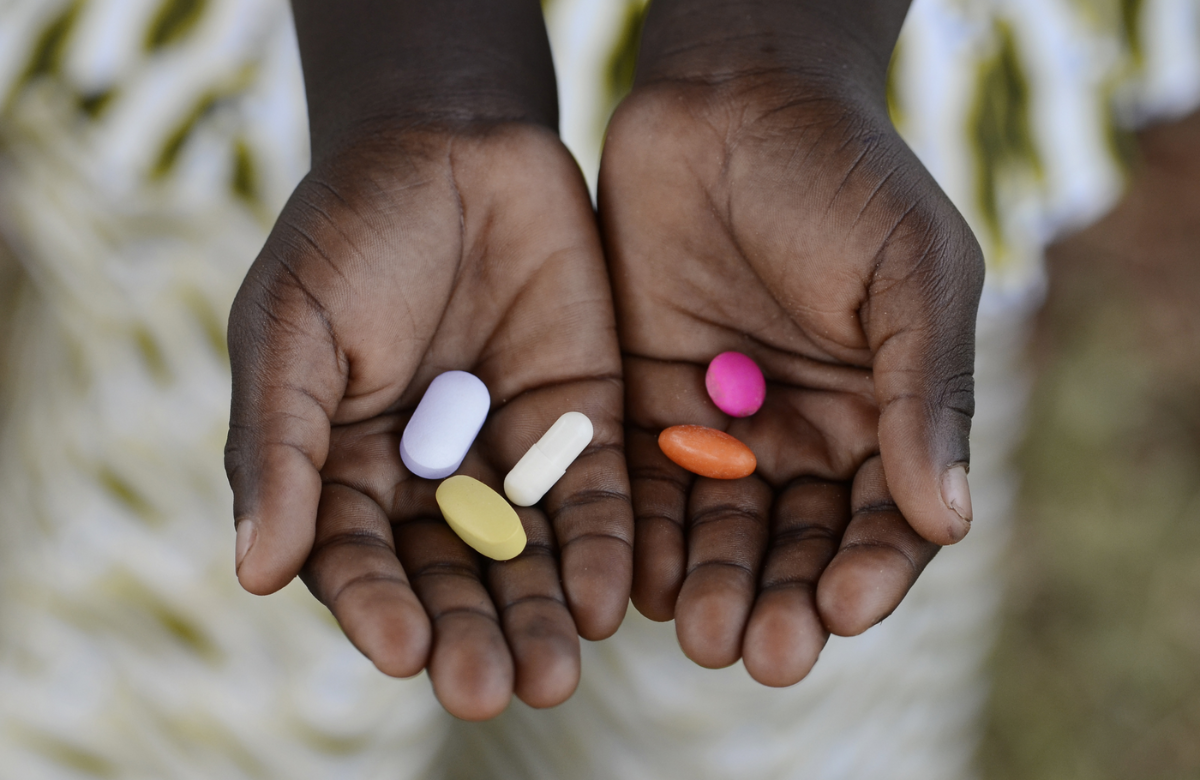Quarterly injections of PrEP may be effective for women

The findings were presented at the 30th Conference on Retroviruses and Opportunistic Infections (CROI 2023) taking place in Seattle, US, this week.
Dr Mark Marzinke of Johns Hopkins University conducted an analysis of drug levels among women participating in the HPTN 084 trial of PrEP (regular medication to prevent HIV) who missed scheduled injections and so had longer gaps between doses than planned.
The first two injections were scheduled four weeks apart in order to build up drug levels. After this, injections were scheduled every eight weeks. There were 224 instances of delayed injections.
Marzinke stratified drug levels measured immediately before the delayed next injection into: at least eight times the IC90 (sufficient to reduce viral replication by 90%); between four and eight times the IC90; between one and four times the IC90; or less than the IC90.
In women whose second injection was delayed, drug levels remained at more than eight times the IC90 in 91% and more than four times in 100%.
In women whose subsequent injections were delayed, 98% had levels above four times the IC90 if their injection was four to six weeks late, 95% if it was six to eight weeks late, and 90% if it was eight to ten weeks late.
This indicates that the vast majority of women would still have protective drug levels after a delay of up to six weeks (up to 14 weeks after their last injection), indicating that a dose every 12 weeks should be enough to maintain efficacy.
Quarterly dosing would mean PrEP injections could be given on the same schedule as injectable contraceptives.
Marzinke highlighted that the same evidence is not there for men. In the HPTN 083 study, in which most participants were men, drug levels were lower between injections.
First, second, and third generation smallpox vaccines protect against mpox

When the mpox (monkeypox) virus began rapidly spreading in non-endemic countries in 2022, smallpox vaccines were widely recommended not only to minimise symptoms of the illness, but also to prevent infection.
At the time, there was a lack of data on how effective a smallpox vaccine would be against mpox. At CROI 2023, researchers from France and the US presented findings that add to the data.
The first mpox case in France was reported while Dr Jade Ghosn of the University of Paris Cité and colleagues were in the midst of the DOXYVAC clinical trial. Their cohort was gay and bisexual men on PrEP with a recent history of a sexually transmitted infection; a population more likely to contract mpox.
French authorities launched a campaign on 11 July 2022 to encourage gay and bisexual men with multiple sexual partners to come forward for vaccination with a third-generation smallpox vaccine known as MVA-BN (brand name Imvanex in Europe and Jynneos in the US).
Clinical centres taking part in the DOXYVAC trial offered the vaccine to their participants and a high percentage (87%) took up the offer.
Mpox cases occurred in 77 of the participants, 61 before the July vaccination campaign, and 16 after. Comparing incidence rate ratios with men who didn’t get vaccinated showed that the vaccine was 99% effective at preventing mpox infection.
Dr Boghuma Titanji of Emory University investigated how effective first-generation (Dryvax) or second-generation (ACAM2000) vaccines were at preventing mpox. She and her colleagues conducted a retrospective analysis using military health data in the United States.
They identified 1007 people who tested for mpox over a four-month period during the outbreak. The US military vaccinated personnel against smallpox between 2002 and 2017, and the cohort contained 208 people with a history of receiving Dryvax or ACAM2000.
Almost 300 people (30%) tested positive for mpox. Comparing incidence rates among those who hadn’t received a vaccine and those who had showed Dryvax was 66% effective at preventing mpox while ACAM2000 was 72% effective.
Titanji concluded that while these older vaccines protect against mpox, the protection they offer is “not absolute”. Further research should investigate the role boosters could play.
Dolutegravir plus darunavir superior to 3-drug darunavir combination in second-line treatment

Current World Health Organization (WHO) guidelines recommend that, after the failure of a first-line regimen that doesn’t include dolutegravir, people with HIV should receive dolutegravir-based second-line treatment, with a nucleoside (NRTI) backbone, ideally chosen based on resistance testing.
Previously, WHO recommended a boosted protease inhibitor and two NRTIs after the failure of first-line treatment. Darunavir/ritonavir is preferred as a boosted protease inhibitor in European and US treatment guidelines because of its high barrier to resistance.
The D2EFT study was designed to compare darunavir/ritonavir plus two NRTIs with a new approach: combining darunavir/ritonavir with the integrase inhibitor dolutegravir. This would avoid the need for resistance testing or the use of the poorly tolerated NRTI zidovudine.
A third arm was added to the study after recruitment began – dolutegravir and recycled tenofovir and lamivudine or emtricitabine (TDF/XTC) – following research showing that recycling NRTIs could be effective.
The study recruited 831 people in 14 low- and middle-income countries in Africa, Asia and Latin America. Participants had advanced HIV: the median CD4 count was 206 and the median viral load was 15,000.
In the original two groups, at week 48, 75% of people taking darunavir/ritonavir plus two NRTIs had a viral load below 50, compared to 84% in the darunavir/ritonavir plus dolutegravir arm.
In those recruited after the third study arm had been added, 71% taking darunavir/ritonavir plus two NRTIs had a viral load below 50, compared to 84% in the darunavir/ritonavir plus dolutegravir arm and 78% in the dolutegravir plus TDF/XTC arm.
Although dolutegravir plus darunavir/ritonavir showed superiority over the standard of care, this option will remain more expensive than dolutegravir plus TDF/XTC, the study investigators said. As existing supply chains support availability of dolutegravir plus TDF/XTC for first-line treatment in low- and middle-income settings, it’s likely that treatment programmes will prefer that option after the failure of first-line NNRTI-based treatment.
Sharing HIV medication is common in rural Uganda

Researchers wanted to find out how many people had shared, given, bought or sold HIV medication, with whom, and if there was any association with viral suppression. To do this, they added queries around sharing ART to questionnaires administered between 2018 and 2020 as part of the Rakai Community Cohort Study. It is a longitudinal survey of all consenting adults aged 15 to 49 across more than three dozen communities in south-central Uganda.
Of the roughly 20,000 people who received the questionnaire, 2852 people reported being on ART and were included in the study sample.
Of these participants, 266 (9.3%) reported ever having given, received, or – in the case of a few participants – bought ART. No one reported selling the medication.
Most people who reported sharing ART said they engaged in both giving and receiving. ART swapping was most likely to happen among those closest to participants: friends, spouses, and sexual partners.
Researchers used a regression analysis to estimate whether sharing ART could be linked with having unsuppressed virus (viral load of more than 40).
People who supplied ART to others but never received it were twice as likely to be virally unsuppressed than those who did not give or receive pills. Meanwhile, those who reported only receiving ART were more likely to be virally suppressed but this difference was not statistically significant.
The study did not report on reasons for sharing ART. Anecdotally, media and activists in countries including South Africa and Mozambique have reported ART sharing as a relatively common coping strategy, especially among migrants without easy access to health care and in communities experiencing drug stockouts.
Switching to injectable cabotegravir and rilpivirine rarely affects body weight

The study found that even though participants were switching away from a combination containing tenofovir alafenamide (TAF), a medication strongly associated with weight gain when it is combined with an integrase inhibitor, few experienced any substantial reduction in weight.
People taking first-line HIV treatment regimens that contain integrase inhibitors have been shown to gain more weight than people taking regimens that do not. Some studies have shown that people gain more weight when taking dolutegravir and bictegravir than when taking elvitegravir.
Cabotegravir is a new integrase inhibitor, given as part of a long-acting injectable regimen together with the NNRTI rilpivirine every two months.
The SOLAR study compared continuing treatment with the combination Biktarvy (bictegravir plus TAF and emtricitabine) with switching to injectable cabotegravir and rilpivirine. The 687 study participants had a median age of 37, 17% were female, 21% were Black and 69% were White.
Median weight at randomisation was 81.3kg in the injectable group and 79kg in the bictegravir group. Body weight was assessed at month 11 or 12 and showed little change in either group (median change of -0.4kg in the injectable group, +0.05kg in the bictegravir group). Within the groups, similar proportions experienced weight gain or weight loss.
At baseline, 17% of participants had metabolic syndrome and there was no change in the proportion with metabolic syndrome in either group by month 12. The proportion of participants with insulin resistance increased slightly in the injectable group, from 42% to 45%; there was no change in the bictegravir group.
Long-acting cabotegravir and rilpivirine may be feasible for people without viral suppression

Both the European Medicines Agency and the US Food and Drug Administration have approved cabotegravir and rilpivirine only for people whose HIV is currently suppressed on a stable oral regimen.
Professor Monica Gandhi, medical director of the Ward 86 HIV clinic at Zuckerberg San Francisco General Hospital, reported results for 133 people who started long-acting cabotegravir and rilpivirine between June 2021 and November 2022. Participants did not need to have viral suppression at baseline and were not required to start with an oral lead-in.
Most participants (88%) were men, 8% were cisgender women and 4% were transgender women. Only a third had stable housing, a majority reported active substance use and 38% had a major mental illness.
At baseline, 76 people had an undetectable viral load on their existing oral regimen and all maintained viral suppression after switching to injections.
A majority of the 57 people who had detectable HIV at baseline had never achieved viral suppression with oral therapy. Of these, 55 achieved viral suppression after switching.
The clinic offers extensive support including case managers, follow-up for those who miss appointments and in some cases street-based nursing services. During a discussion following the presentation, several people pointed out that this approach might not be applicable for patients who do not have access to such intensive support.
“We need innovations for this population if we want to end the HIV epidemic,” Gandhi said. “If used creatively and used boldly, long-acting antiretroviral treatment could really make a dent in the epidemic.”
